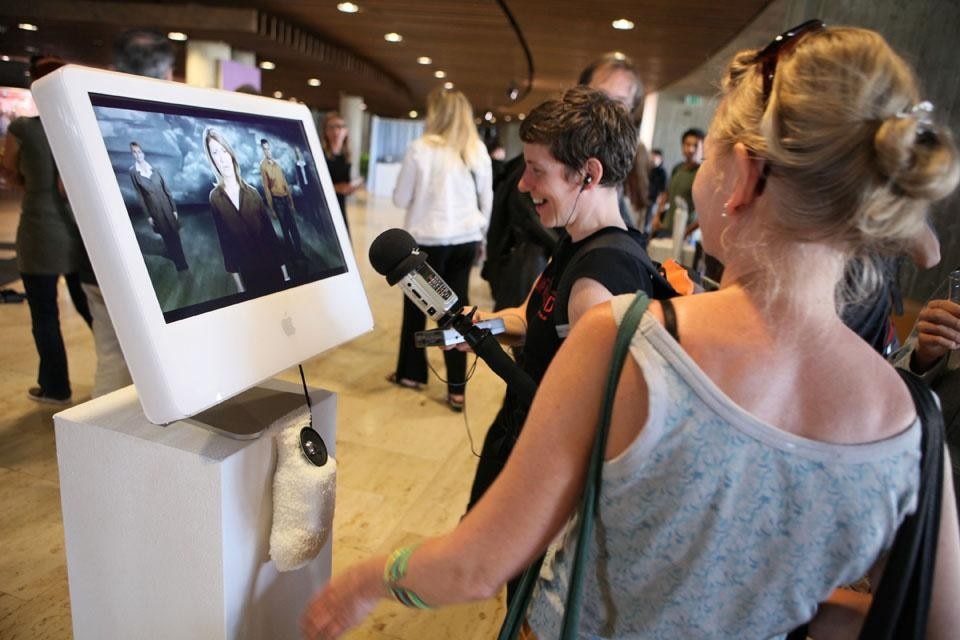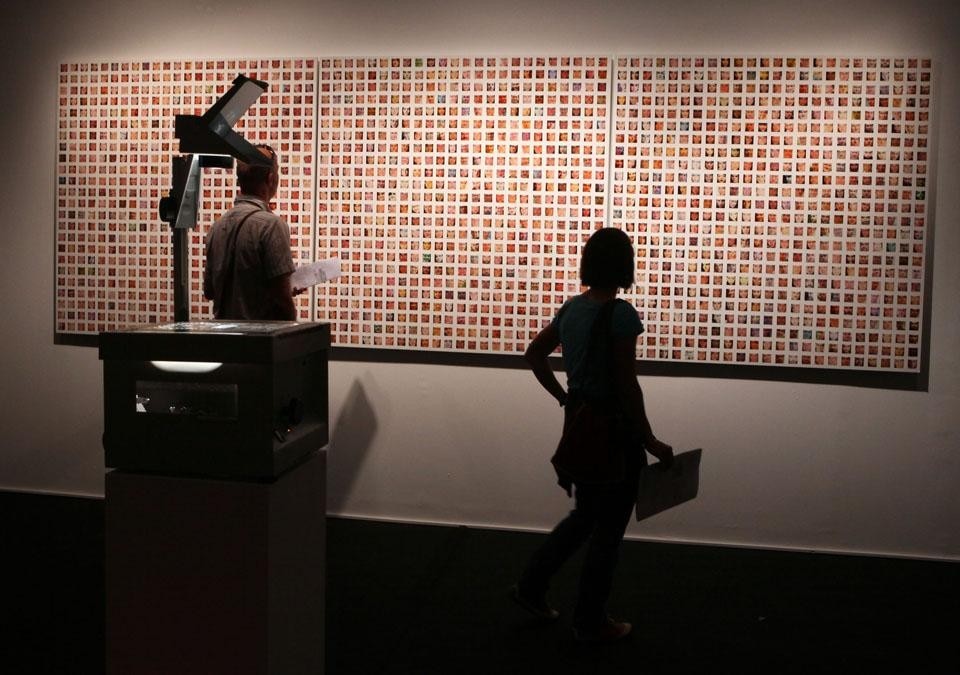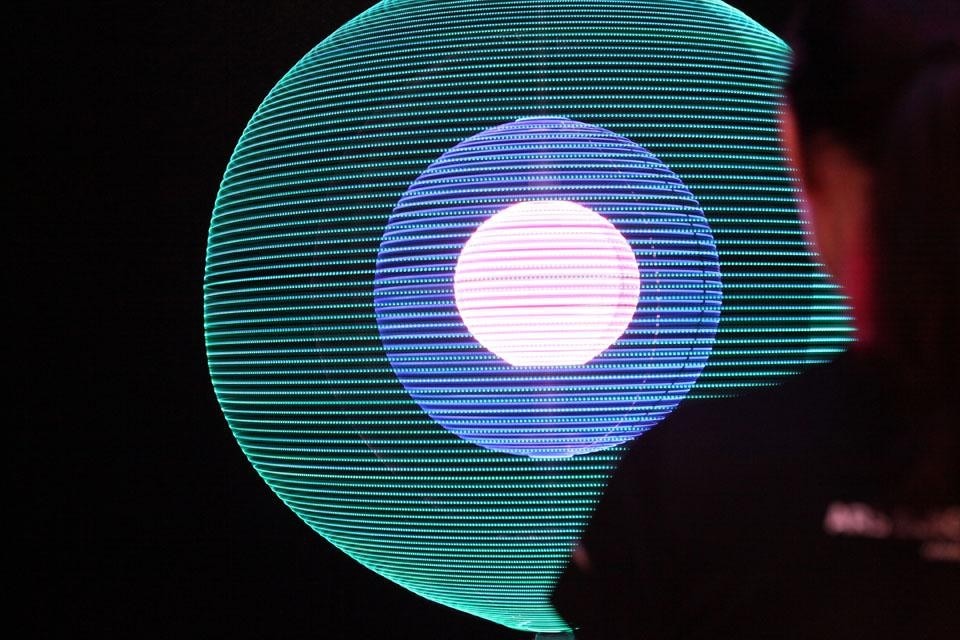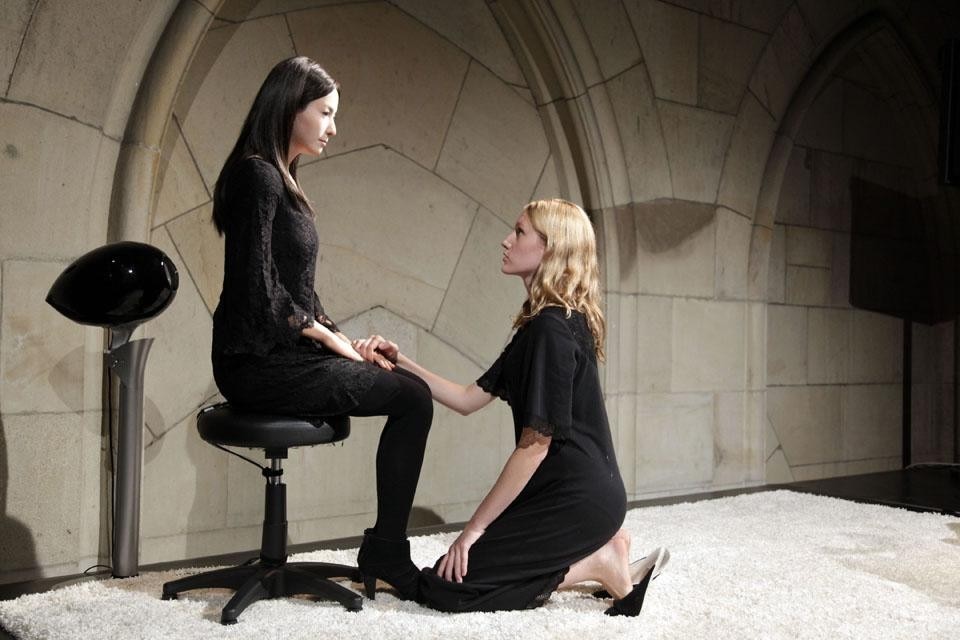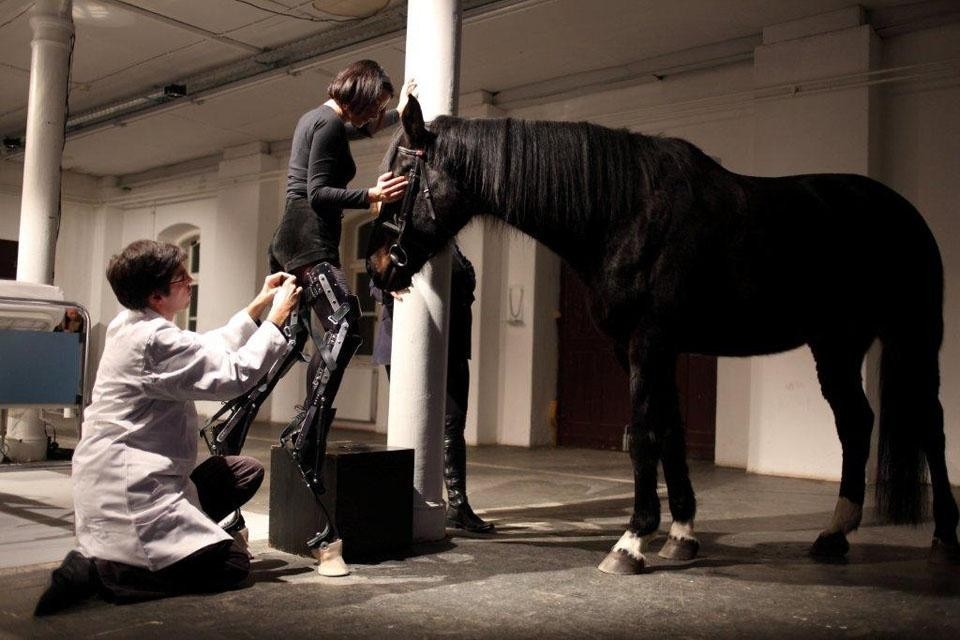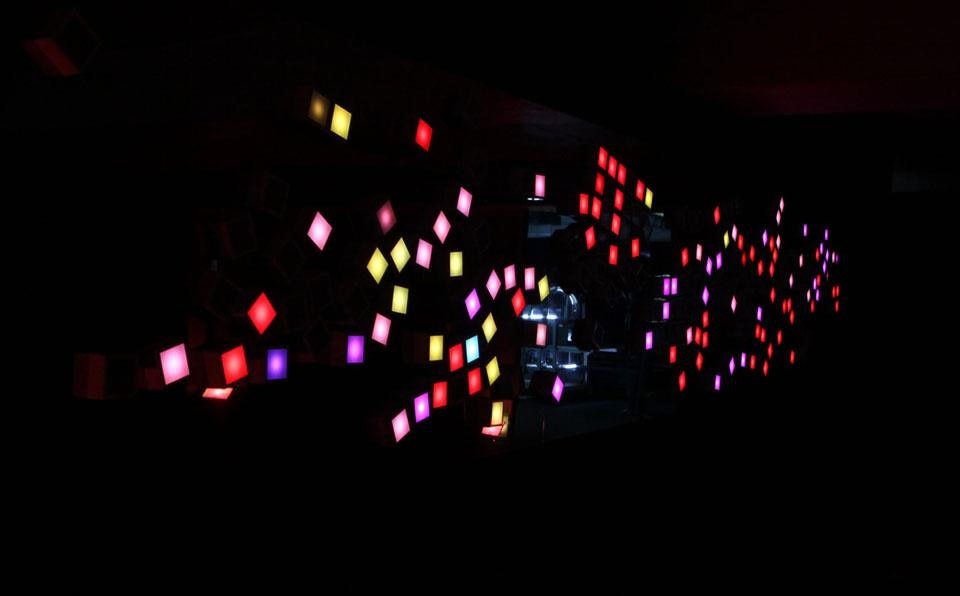
Above: Six-Forty by Four-Eighty, by Jamie Zigelbaum and Marcelo Coelho interprets the touchscreen principle with handy magnetic pixels that can be arrayed however the user wishes. One touch is all it takes to change a pixel’s color or to copy onto another.
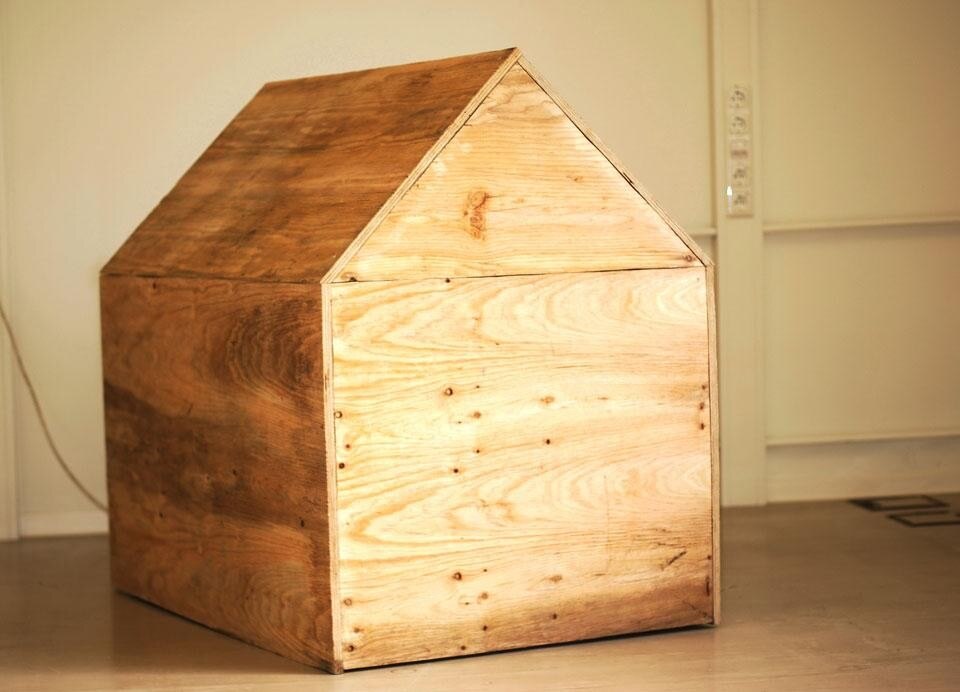
If interactive art still has a meaning today, it is that of investigating this space of unpredictability, which basically characterises all genuine interaction.
